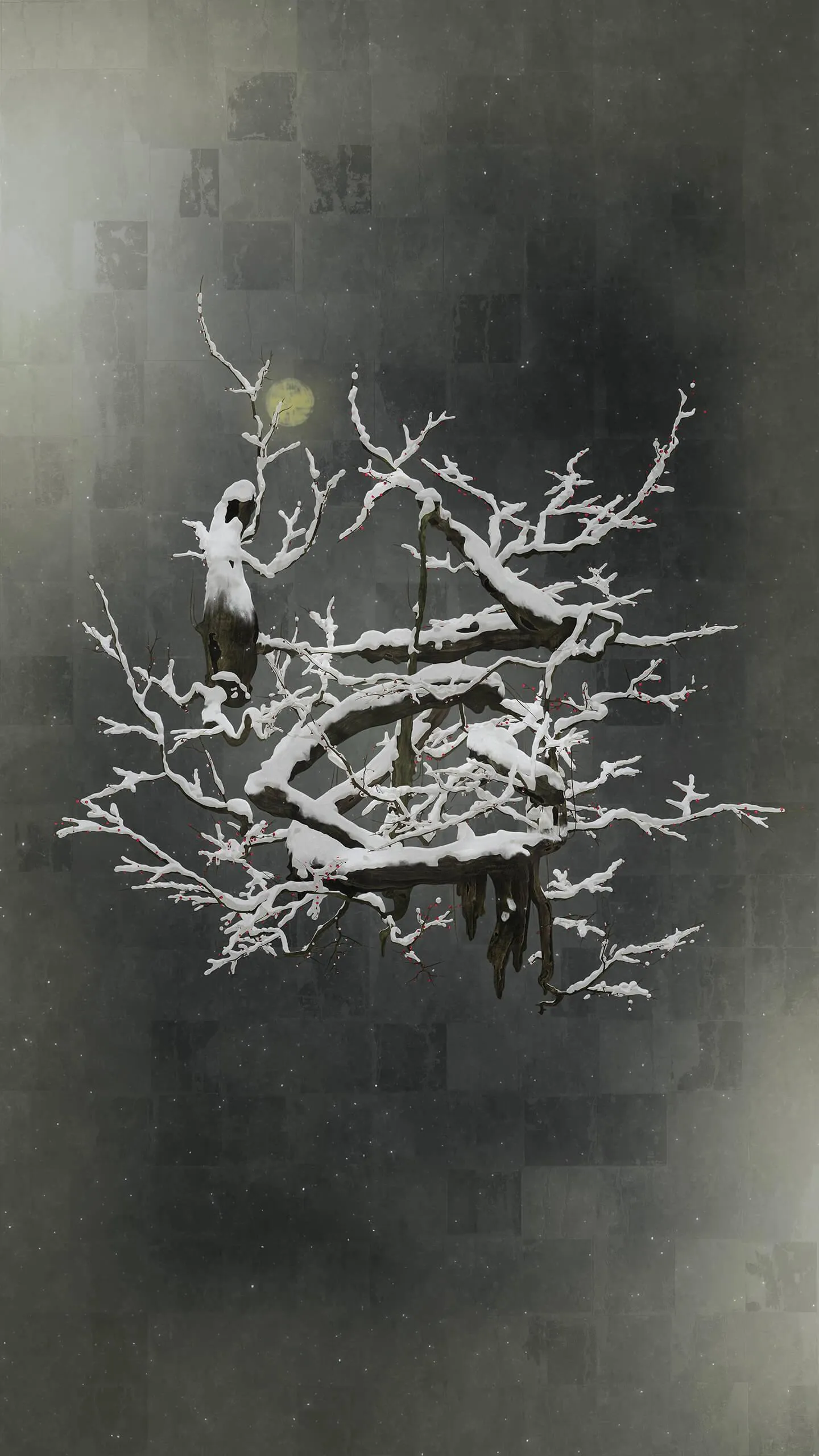Flower and Corpse Glitch Set of 12
Created from 12 screens, this illustrated story features a theme of "the clash, cycle, and symbiosis between nature and culture.
The world of the artwork is created in three-dimensional space on the computer, visualizing a ultrasubjective space within 12 perspectives. The surface peels away, and the other side of the work rises to the surface.
Three-dimensional shapes are represented by a computer as abstract, higher-order information described by a mesh construction. When the surfaces of those three-dimensional rendered objects are peeled away, it is apparent that they are created from various combinations of mesh structures. By peeling away the surface, the underside of the work is revealed allowing a glimpse into the creative process behind it.
1: Flower and Corpse Glitch Set of 12 Capital City & Noble
The capital city in all its wondrous glory.
2: Flower and Corpse Glitch Set of 12 Disaster & Prosperity
An evil disease spreads throughout the capital.
3: Flower and Corpse Glitch Set of 12 Mountain People & Festival
Hikaru Genji follows the disease and ends up in a mountain village. To celebrate the blessings of nature, the village holds a festival.
4: Flower and Corpse Glitch Set of 12 Daily Life & Forest
The village festival is over and the village returns to ordinary life. Even under the influence of the disease, the people bravely live on. They receive the benefits of nature, living in abundance and cutting down trees to develop their civilization.
5: Flower and Corpse Glitch Set of 12 The Spirit Tree & Yamata no Orochi
The mountain village is asked to provide large amounts of timber to further develop the city. The villagers cut down a large tree deep within the mountains. When the sacred tree is downed, suddenly, Yamata no Orochi appears from the fallen tree. Yamata no Orochi is furious with rage and causes heavy rain and flooding in the valley.
6: Flower and Corpse Glitch Set of 12 Yamata no Orochi & The Gods of the Forest
Yamata no Orochi knocks down the houses of the mountain village. Following the rampage of Yamata no Orochi, the gods of the forest appear and begin to attack the people.
7: Flower and Corpse Glitch Set of 12 Weapons & Battlefield
The mountain villagers ask samurai to come to the mountain village, and a battle between the warriors, the gods of the forest, and Yamata no Orochi begins.
8: Flower and Corpse Glitch Set of 12 Destruction & Victory
After a fierce battle, the warriors make use of the developments of civilization, such as flaming arrows and swords. Eventually the samurai warriors begin to be victorious.
9: Flower and Corpse Glitch Set of 12 Hunger & Wasteland
After the battle, the burned-out forest is a wasteland. The benefits of nature are lost and the mountain village suffers hunger and despair.
10: Flower and Corpse Glitch Set of 12 Flower & Corpse
Hikaru Genji is surrounded by the dead bodies of the gods of the forest and Yamata no Orochi. Despairing, he spreads seeds over the corpse of Yamata no Orochi. Then, from the dead corpse, buds appear and numerous flowers bloom. The flowers grow over the trees and the forest is gradually restored.
11: Flower and Corpse Glitch Set of 12 Festival & Forest
The people of the mountain begin once again to reap the benefits of the forest and civilization is restored. The people of the village are determined to go on and live in harmony with the forest and the festival is once again held.
12: Flower and Corpse Glitch Set of 12 City & Festival
The evil disease subsides in the capital city. The people still do not know the cause of the disease, but they carry out a festival of thanks at this auspicious change of fortune.













